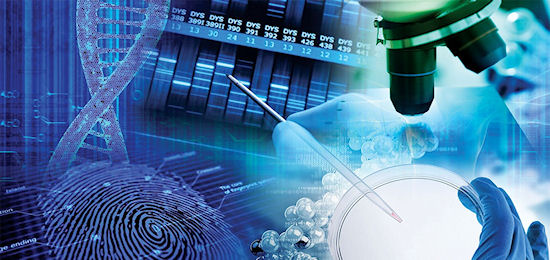The application of scientific methods to examine the evidences gathered in order to solve queries, thereby helping the legal system to acknowledge the truth is known as forensic science.
These evidences may range from fingerprints to blood samples or from a memory card to a hard disk. The word 'forensic' was derived from the Latin word 'forensis' meaning 'before the forum'.
Forensic Science History
The first documented use of medical knowledge to solve a crime can be traced to a Chinese book, written in 1248, titled Xi Yuan Ji Lu or 'Collected Cases of Injustice Rectified', written by Song Ci. It contained descriptions of how to distinguish a death due to drowning from a death due to strangulation.
The 18th and 19th centuries saw a great deal of progress in the field of forensic science in Europe. One of the first recorded instances of forensic science application in solving a legal case came in 1784, in England, when a torn piece of paper recovered from the bullet wound in the victim's head matched with the other piece of paper from John Tom's pocket, which led to his conviction.
Fortunatus Fidelis, an Italian doctor, is regarded as the first person to practice modern forensic medicine, way back in 1598. Later, in the 19th century, forensic medicine became a recognized branch of medicine. In 1806, German chemist, Valentin Ross developed a method to detect poison in the walls of a victim's stomach. In a murder trial in 1836, James Marsh, was able to identify arsenic intake as the cause of death with the help of forensic science.
Edmond Locard, a renowned criminologist from France, formulated the basic principle of forensic science, which says, "Every contact leaves a trace". In 1910, he established the world's first laboratory that was fully dedicated to crime analysis, in association with the Lyons Police Department. His seven volume work; Traité de Criminalistique proved to be of great help in many criminal investigations. In 1932, the Federal Bureau of Investigation (FBI) established its own forensics laboratory, known as Federal Crime Laboratory with J. Edgar Hoover as its director.
Over a period of time, forensic science has been broadly divided into a few sub-divisions, each specializing in a particular aspect. While digital forensics is applied to prove scientific methods and techniques to recover data from digital media, forensic toxicology is applied to determine the effects of drugs and poison on living beings. Forensic anthropology is utilized to recover and identify skeletal remains whereas veterinary forensics is used to solve crime involving animals.
Forensic DNA Analysis
The DNA of every person is unique, with the only exception being identical twins. An individual's DNA profile can be generated by using samples from blood, bone or hair. Analyzing the DNA samples collected from the crime-scene with those of the suspect for the presence of a set of specific DNA markers can serve as the proof of crime. DNA profiling was first described by an English geneticist, named Alec Jeffreys in 1985. It was first used in England to convict Colin Pitchfork for the murder of two girls, while in the United States, the first instance came with the conviction of Tommy Lee Andrews for the case related to a series of sexual assaults.
The last two decades have seen a tremendous growth in the use of DNA evidence to solve criminal cases as well as paternity detection. Today, forensic science is used in the investigation of every major crime with a few hundred forensic laboratories contribute to solving thousands of crimes in the United States. Its popularity in the law enforcement community will only help establish justice.




